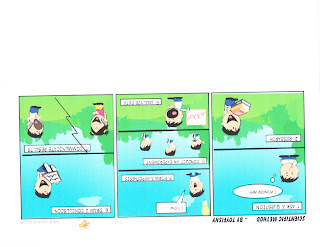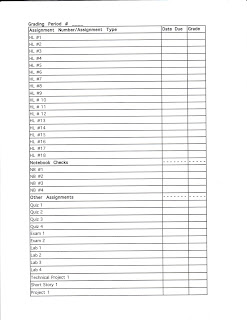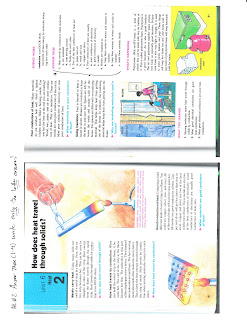
Make sure this cartoon is included in your notes.
Students will be able to:
use information from hands-on activities and classroom discussions to
- state that the scientific process is a means to finding the answer to a problem through a series of prescribed steps.
-describe the steps of the scientific method.
-utilize the scientific process in solving a problem.
Students began notes in their interactive science notebook.
Students wrote the date (8/24) under the date in the Table of Contents. They next recorded the Big Idea in the appropriate column. The Big Idea was SC.6.N.1.1. The topic was The Scientific Process and the page was 11.
Students then turned to page 11 and set up a Cornell notes page. Be sure the date and topic are boldly displayed on the page.
Students recopied the KWL chart on The Scientific Process. A summary of the notes can be found here:
The scientific method or process by which scientists find the answer to questions or problems.
The steps of the scientific method include: ask a question or state a problem; use inference observations; do the research; form a hypothesis; do an experiment, which includes gathering materials and following procedures; gather data; analyzing results, specifically using charts, tables and graphs to illustrate the data; draw a conclusion; rethink the hypothesis, if necessary, and and share the findings.
If you were absent on Monday, be sure to record this information on page 11.
Page 11 also had the cartoon posted at the top of this blog. This is a summary of the scientific process.
Students should write a level one question (example: What is the scientific method?); a level two question (example: What is the difference between an inference, an opinion, and a fact?) and a level three question (example: How could the scientific method solve a global issue such as the Gulf Oil leak? For EACH of the questions, use a DIFFERENT colored highlighter to highlight the question. Use the SAME color highlighter to highlight the answer in your notes!
When completed, write a two to three sentence summary based on your notes. The summary should tell what the scientific method is, and the steps involved.
Don't forget,also paste in the following directions handout. Do NOT go past page 12 in your notebook.













